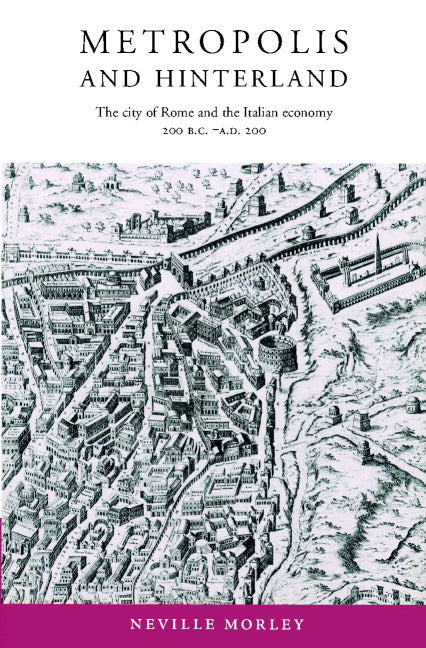Freshly Printed - allow 8 days lead
Couldn't load pickup availability
Metropolis and Hinterland
The City of Rome and the Italian Economy, 200 BC–AD 200
This book studies the growth of the city of Rome and the effects of its demands for food and migrants on the economy of Italy.
Neville Morley (Author)
9780521893312, Cambridge University Press
Paperback, published 19 December 2002
224 pages, 3 maps 1 table
22.9 x 15.3 x 1.7 cm, 0.34 kg
"Morley presents his thesis clearly, logically, and persuasively. His arguments will give both primitives and modernists much to ponder..." R.I. Curtis, Choice
Ancient Rome was one of the greatest cities of the pre-industrial era. Like other such great cities, it has often been deemed parasitic, a drain on the resources of the society that supported it. Rome's huge population was maintained not by trade or manufacture but by the taxes and rents of the empire. It was the archetypal 'consumer city'. However, such a label does not do full justice to the impact of the city on its hinterland. This book examines the historiography of the consumer city model and reappraises the relationship between Rome and Italy. Drawing on archaeological work and comparative evidence, the author shows how the growth of the city can be seen as the major influence on the development of the Italian economy in this period as its demands for food and migrants promoted changes in agriculture, marketing systems and urbanisation throughout the peninsula.
Introduction: Rome and Italy
1. The metropolitan city in a pre-industrial economy
2. The demographic burden
3. A model of agricultural change
4. The transformation of the Roman suburbium
5. Agricultural development in central Italy
6. Exploiting the margins
7. Marketing and urbanisation
Conclusion
Bibliography
Index.
Subject Areas: General & world history [HBG]


